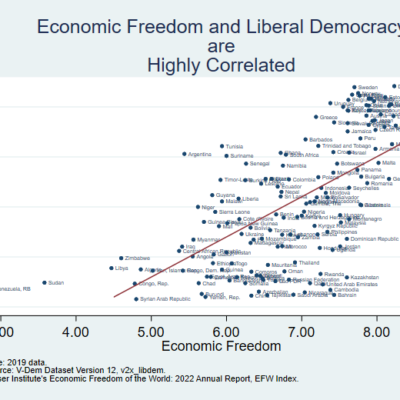Here I’ll break down a nuanced options trade for on a transportation stock reporting next week. If you’ve spent time on the nation’s highways, you’ve undoubtedly seen one of their trucks. JB Hunt Transport Services, Inc . is one of North America’s largest transportation logistics companies. Headquartered in Lowell, Arkansas, it provides “Intermodal,” combining rail and truck transport, third-party logistics (3PL) services, traditional full-load trucking services, and “final mile” delivering goods directly to consumers’ homes, among others. The freight and shipping industry is closely watched as a barometer of the economy’s health. The volume of goods transported reflects the demand for products across various sectors. Higher freight volumes typically indicate solid economic activity as manufacturers, retailers, and other businesses ship more products to meet consumer and industrial demand. Increases in revenue and profit margins suggest pricing power, indicative of robust business activity and efficient operations. Declines, conversely, signal economic slowdowns or increased competition and cost pressures. Unfortunately, this has been the case for JB Hunt lately. Revenues for the most recently reported quarter were down 8.8% versus the prior year, while earnings fell 34%. Going into the most recently reported quarter, the price action wasn’t fantastic, but an earnings miss and gap lower caused the shares to roll over. A review of an array of technical indicators is, at best, mixed as of this writing. JBHT YTD mountain J.B. Hunt, YTD These results are consistent with the generally weak state of the “real” economy that we highlighted earlier this week when discussing Fastenal ahead of its earnings in this column . Analysts forecast that 2024 earnings will be lower than the prior year, even before adjusting for inflation. The trade There is a bright side, though. Where Fastenal is trading at a material premium to the S & P 500 overall, JB Hunt is trading at a slight discount—a discount that grows if the $8.40/EPS mean of analyst estimates for full-year 2025 earnings and 8% year-over-year revenue growth proves accurate. While I’m not prepared to call for a stellar quarter – economic pressures generally don’t resolve quickly – much of the near-term damage may be done. With that in mind, I’m inclined to adopt a strategy similar to that employed by Fastenal but with a more bullish directional bias. Here, I am putting on a “strangle-swap,” by purchasing a longer-dated strangle financed in part by selling a nearer-dated one. In this example, it is the July/November $145/$165 strangle swap, a trade which should see profits if the stock remains within those strikes (or even slightly beyond them) through July expiration. Bought Nov. 15 $150 put Sold July 19 $150 put Bought Nov. 15 $165 call Sold July 19 $165 call Peak profits would be achieved at the higher call strike, so I describe this trade as modestly bullish despite the near-term technical and fundamental pressures. DISCLOSURES: (None) All opinions expressed by the CNBC Pro contributors are solely their opinions and do not reflect the opinions of CNBC, NBC UNIVERSAL, their parent company or affiliates, and may have been previously disseminated by them on television, radio, internet or another medium. THE ABOVE CONTENT IS SUBJECT TO OUR TERMS AND CONDITIONS AND PRIVACY POLICY . THIS CONTENT IS PROVIDED FOR INFORMATIONAL PURPOSES ONLY AND DOES NOT CONSITUTE FINANCIAL, INVESTMENT, TAX OR LEGAL ADVICE OR A RECOMMENDATION TO BUY ANY SECURITY OR OTHER FINANCIAL ASSET. THE CONTENT IS GENERAL IN NATURE AND DOES NOT REFLECT ANY INDIVIDUAL’S UNIQUE PERSONAL CIRCUMSTANCES. THE ABOVE CONTENT MIGHT NOT BE SUITABLE FOR YOUR PARTICULAR CIRCUMSTANCES. BEFORE MAKING ANY FINANCIAL DECISIONS, YOU SHOULD STRONGLY CONSIDER SEEKING ADVICE FROM YOUR OWN FINANCIAL OR INVESTMENT ADVISOR. Click here for the full disclaimer.




